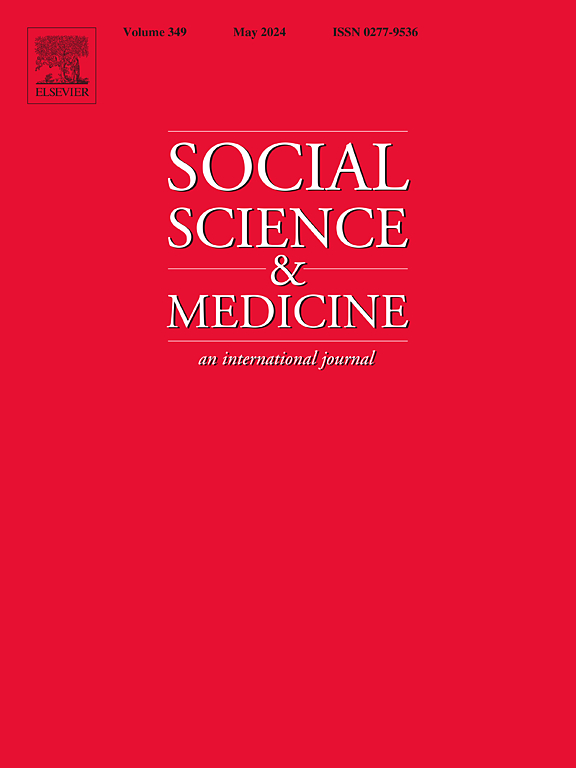Individual & joint associations of sexual stigma and mental distress with PrEP uptake, adherence and persistence among US gay and bisexual men
IF 4.9
2区 医学
Q1 PUBLIC, ENVIRONMENTAL & OCCUPATIONAL HEALTH
引用次数: 0
Abstract
Background
Sexual stigma, mental health disorders, and socioeconomic disparities present important yet incompletely understood barriers to PrEP adoption among gay men and other men who have sex with men (MSM). This study examines how these factors interact and affect PrEP uptake, adherence, and persistence among MSM.
Methods
Data from the 2018 and 2019 American Men's Internet Survey cycles, involving 6907 adult MSM eligible for PrEP, were analyzed. We assessed sexual stigma heterogeneity among this group using latent class analysis and investigated individual relationships between i) stigma class membership, ii) mental distress, and PrEP engagement (past-year use, adherence, and persistence) using Poisson regression with a robust error variance, considering potential variations based on poverty status. The combined associations of sexual stigma and mental distress with PrEP engagement was evaluated using inverse probability weighting.
Results
Four distinct sexual stigma classes were identified, each exhibiting varied associations with PrEP engagement. Associations with mental distress lost statistical significance after adjusting for confounders. However, having both mental distress and sexual stigma was associated with lower past-year PrEP use, with the strongest association observed for those with anticipated healthcare stigma class membership and mental distress (aPR 0.53 [95% CI: 0.37, 0.76]). Sexual stigma accompanied by mental distress was also associated with significantly increased poor PrEP adherence, particularly among those with family and general social stigma class membership (aPR 2.31 [95% CI: 1.08, 4.97]).
Conclusions
Psychosocial factors exert synergistic impacts on PrEP engagement among MSM. Tailored interventions addressing these subtleties may effectively optimize PrEP uptake and improve consistency of use among MSM.
美国男同性恋者和双性恋者中性污名和精神痛苦与 PrEP 的摄取、坚持和持久性之间的个体和联合关联。
背景:性污名化、心理健康障碍和社会经济差异是男同性恋者和其他男男性行为者(MSM)采用 PrEP 的重要障碍,但人们对这些障碍的了解尚不全面。本研究探讨了这些因素是如何相互作用并影响 MSM 中 PrEP 的接受、坚持和持久性的:分析了 2018 年和 2019 年美国男性互联网调查周期的数据,涉及 6907 名符合 PrEP 条件的成年 MSM。我们使用潜类分析评估了这一群体中性污名的异质性,并使用带有稳健误差方差的泊松回归法调查了 i) 污名类别成员、ii) 精神痛苦和 PrEP 参与度(过去一年的使用、坚持和持久性)之间的个体关系,同时考虑了基于贫困状况的潜在差异。使用反概率加权法评估了性污名和精神压力与 PrEP 参与度的综合关系:结果:发现了四个不同的性污名等级,每个等级都与 PrEP 的参与度有不同的关联。在对混杂因素进行调整后,与精神痛苦的关系失去了统计学意义。然而,同时存在精神痛苦和性污名与过去一年较低的 PrEP 使用率有关,其中预期的医疗保健污名等级成员与精神痛苦的关联性最强(aPR 0.53 [95% CI: 0.37, 0.76])。伴有精神压力的性污名也与 PrEP 的不良依从性显著增加有关,尤其是在家庭和一般社会污名等级成员中(aPR 2.31 [95% CI: 1.08, 4.97]):社会心理因素对男男性行为者参与 PrEP 产生了协同影响。针对这些微妙因素进行有针对性的干预可有效优化 PrEP 的吸收并提高 MSM 使用的一致性。
本文章由计算机程序翻译,如有差异,请以英文原文为准。
求助全文
约1分钟内获得全文
求助全文
来源期刊

Social Science & Medicine
PUBLIC, ENVIRONMENTAL & OCCUPATIONAL HEALTH-
CiteScore
9.10
自引率
5.60%
发文量
762
审稿时长
38 days
期刊介绍:
Social Science & Medicine provides an international and interdisciplinary forum for the dissemination of social science research on health. We publish original research articles (both empirical and theoretical), reviews, position papers and commentaries on health issues, to inform current research, policy and practice in all areas of common interest to social scientists, health practitioners, and policy makers. The journal publishes material relevant to any aspect of health from a wide range of social science disciplines (anthropology, economics, epidemiology, geography, policy, psychology, and sociology), and material relevant to the social sciences from any of the professions concerned with physical and mental health, health care, clinical practice, and health policy and organization. We encourage material which is of general interest to an international readership.
 求助内容:
求助内容: 应助结果提醒方式:
应助结果提醒方式:


